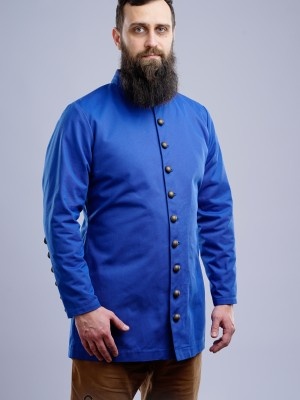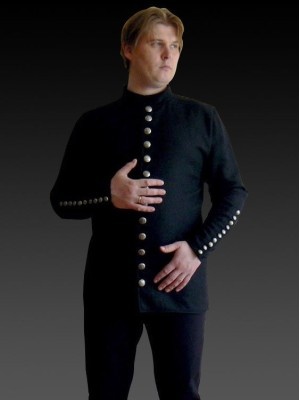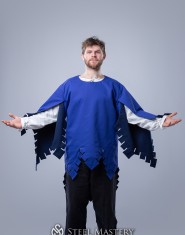Über Mittelalterliche Oberbekleidung für Männer
Every piece of Medieval men's clothing is handmade by personal parameters and regards of customer. Medieval men's clothing clothing from this section is based on the historical sources, such as medieval paintings, gravures or museum showpieces.
To order one of these doublets or houppelande, you need to do few simple actions:
- Open the wished model;
- Choose fabric;
- Define the colour of your clothing;
- Add lining material;
- Choose required size.
If you have any difficulties with choosing, please contact our manager. We will help you to specify your size and required model.
Once all options have chosen, you need to add item to the cart and make a payment. After that, manager will contact you with measurement request and specification of order’s details.
If you did not find the wished piece of clothing in this section, we can make it individually for you. Just send picture with detailed description to [email protected]. Then we will advise you price and discuss details of order.
Cotardie of mid-thigh length was one of the most popular type of Medieval men's clothing in the XIII-XIV centuries. Typical feature was narrow tight silhouette. Cotardie had many buttons from the front and on the sleeves. Men were wearing cotardie with belt decorated with steel rivets, beautiful plates and fancy braids.
Sleeves had different shape: narrow or flared to the wrist, with festoons on the edges. Some cotardies had short stand-up collar, but most of them did not have collars at all.
Wide over clothing of different cut and length, which called houppelande, started to come into fashion from the end of the XIV century. It did not have fastenings and was pulled over the head. Wristbands and stand-up collars were often trimmed with fur. As well as cotardie, men belted houppelande.
Younger men were wearing shorter houppelandes, as they were more comfortable for riding. Noblemen of the middle years were using ankle-length houppelande. Most often, it was flared and draped. Some tailors could get creative and decorate this upper clothing with scalloped festoons, fur trim or braid.
In time, sleeves got vertical cut for arm passing through. Sleeves were hanging down the ground just like a decorative element. This cut could also be decorated with fur or bright lining fabric.
Only representatives of the upper class could afford expensive fabrics, for example figured gold brocade or velvet. The most popular colours for houppelande were black, brown, green, red and purple.
In the late Middle Ages (XV-XVI centuries), foppish young men were wearing doublet over the chemise. It was thigh-length short jacket. Doublet had appeared much earlier, but it was used mostly as under armour clothing. In the XV century, doublet with stand-up collar became independent type of clothing. Doublet was tailored of wool or linen and had fur lining for cold wintertime.
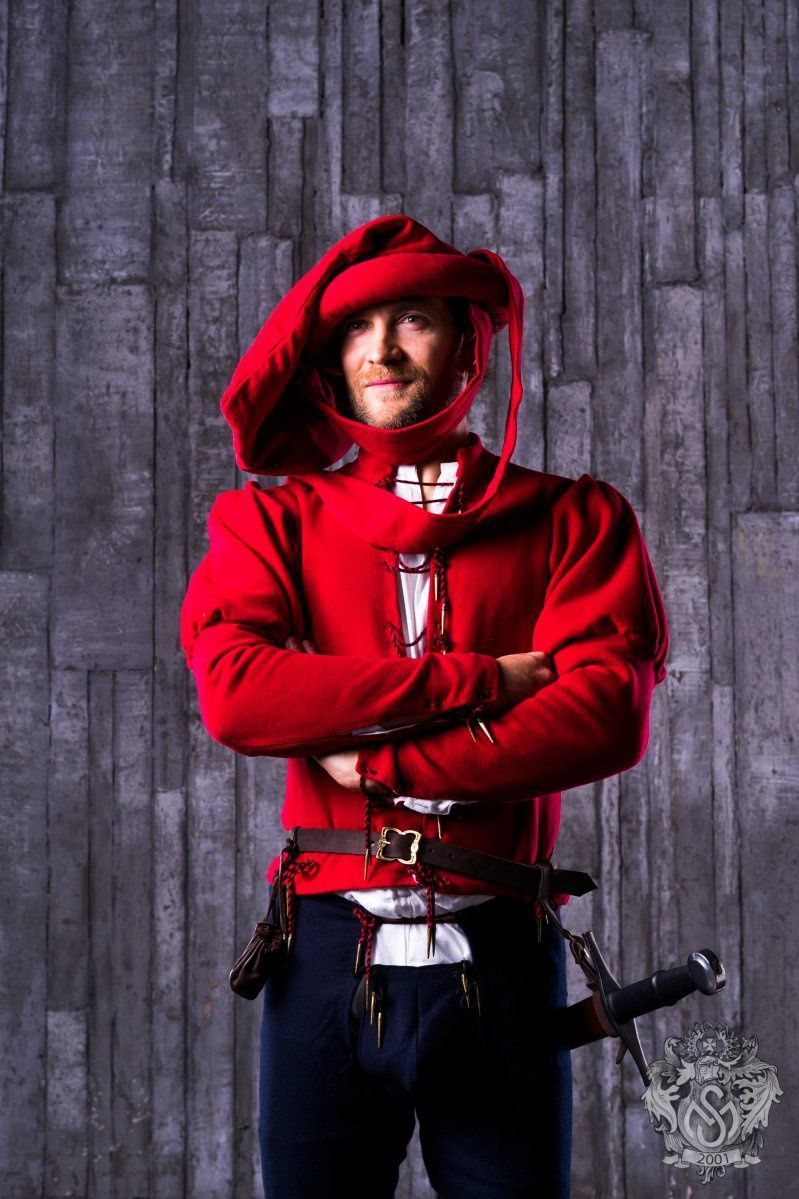 Starting the XII century, feudal lords started to get personal emblem, which were passed to their direct descents through parental lineage. First blazons were simple marks of distinction on the knights’ shields and used by crusaders.
Starting the XII century, feudal lords started to get personal emblem, which were passed to their direct descents through parental lineage. First blazons were simple marks of distinction on the knights’ shields and used by crusaders.
Coat of arms came into use. Men were wearing it over the armour or other clothes. It was borrowed from the Arabs and primarily used as coat for protection from the sun. In time, tailors started to sew symbols of personal emblem in particular colours. Therefore, not only lord, but also his vassals, pages and common servants were wearing clothing in heraldic colours.
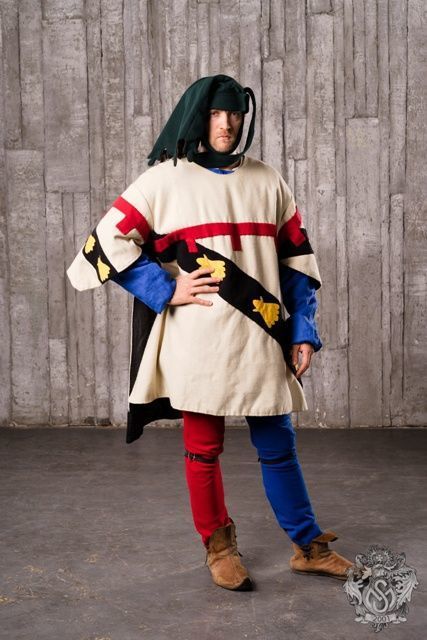 These coats of arms were widespread in Europe during several centuries until the XV centuries. In France, this type of clothing was called tabard. Its cut became narrower and sleeves were shortened. Tabard was a necessary attribute at heralds at the knight tournaments.
These coats of arms were widespread in Europe during several centuries until the XV centuries. In France, this type of clothing was called tabard. Its cut became narrower and sleeves were shortened. Tabard was a necessary attribute at heralds at the knight tournaments.

-0-2-0-1-2-300x400.jpg?v=1746523880)
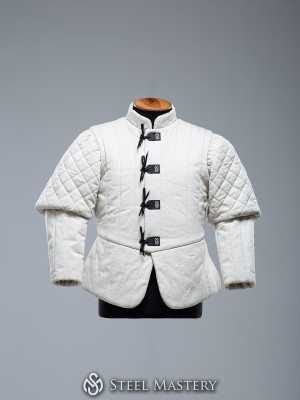
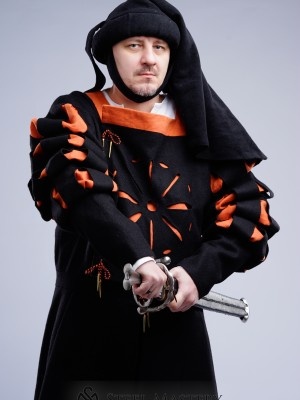

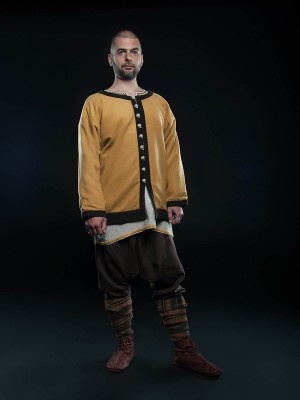
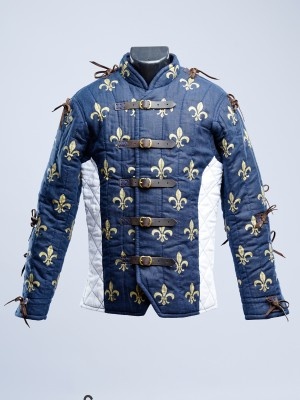
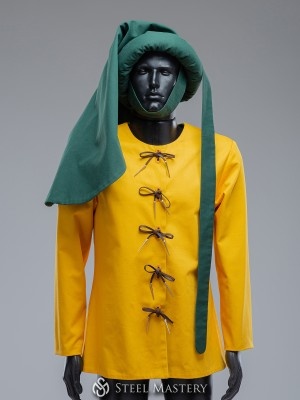

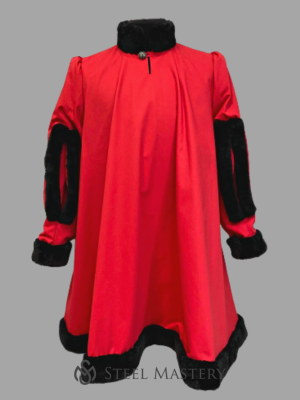
-0-2-0-1-2-300x400.jpg?v=1746523880)
